Email best practices
How to create an email list signup form
Signup forms come in all shapes and sizes. But what separates the good, from the bad, from the ugly? We’ll run through some examples and the many fields at your disposal.

PUBLISHED ON
Your email list signup form is the foundation for everything you do as an email marketer. Without a carefully collated and well-maintained email list, it doesn't matter how sophisticated your email campaigns are. If you are not targeting the right people (or enough people), you might find yourself shouting in a vacuum.
Building and maintaining a healthy email list is one of the biggest challenges email marketers face. Your subscribers do not surrender their email addresses easily. So, you need to build trust and reassure them that the information you send to their inboxes will be relevant and incredibly valuable. This process starts with a great email signup form.
Table of contents
Name
Birthday
Gender
Location
Language
Phone number
Preferences or interests
Company size
Business sector
What is an email signup form?
An email signup form is a short web form found on websites, social media platforms, and apps that allows visitors to provide their email addresses and other relevant information to subscribe to a mailing list or newsletter. Typically, the form will include fields for the user's name, email address, and possibly other information such as age, gender, location, or job title.
When users submit their information through the signup form, they are essentially granting their permission to be added to a mailing list and receive targeted updates or email newsletters from the sender.
However, to be truly effective, an email signup form needs to be about more than just collecting data. It must also sell the benefits of subscribing to a list.
Legally, you must make it clear to the user that by entering personal information, they agree to receive emails from your organization and can unsubscribe anytime.
Why do you need a signup form to build your email list?
The only way to legitimately build an email list is with a signup form. It lets you cultivate a group of people who are already interested in what you have to offer and who are likely to engage with future marketing messages. This increases conversions and ultimately drives more sales in the long term.
Plus, signup forms are important because it shows your audience that you respect their privacy by following data protection laws. It’s a chance to prove your pledge to provide valuable information to their inboxes.
Here are the most important reasons for having a list:
Selling the benefits of a subscription: Highlight why someone should join your list by explaining what they will get in return. For example, a regular newsletter highlighting the latest news and information about your business or wider industry. You can also offer your subscribers other incentives, such as a discount code or a detailed piece of thought leadership content, such as an ebook or digital download.
Confirming permission: When subscribers join your list via your email signup form, they must accept your permission statement, which ensures your email marketing activities comply with regulations, including GDPR, CASL, CPRA, and CAN-SPAM. In addition, using a double opt-in process helps guarantee that everyone who is added to your lists is a legitimate subscriber by asking them to confirm their subscription before proceeding.
List hygiene: Good email list hygiene is about adding, segmenting, and removing email addresses in a timely fashion. Automatically adding email addresses to the correct list enables marketers to start their relationship with the subscriber on the right footing and start marketing towards that prospect when they are at their most engaged.
Test
What makes a great email signup form?
The best email signup forms are quick and easy to fill out.
Some email signup forms are so simple they only ask for one thing – the subscriber's email address. This no-fuss strategy works well for companies that want to capture as many email addresses as possible with a direct call-to-action. For example, the European budget airline, Ryanair, famed for its rather direct approach to marketing, simply demands: “Why are you not subscribed?”
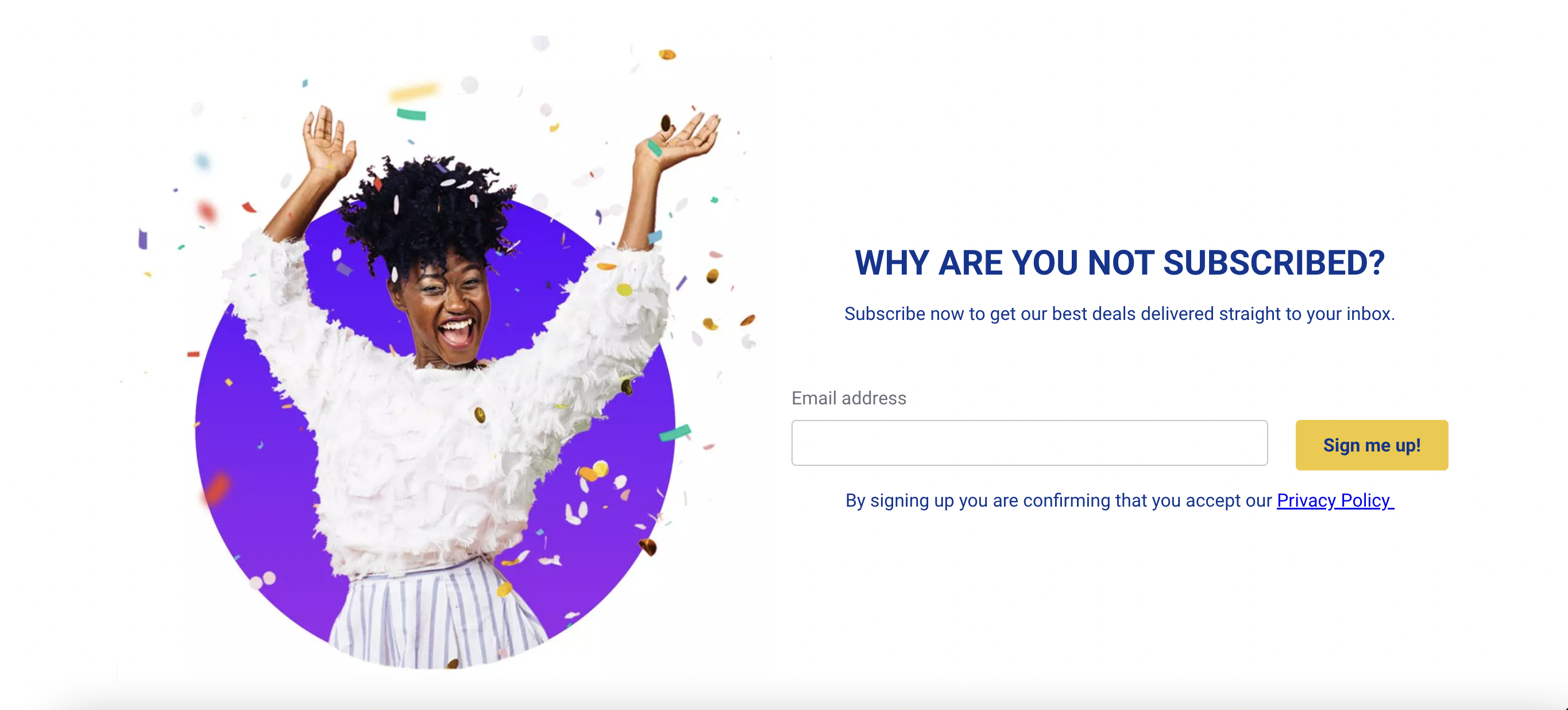
An email address can actually tell you quite a lot about a subscriber. For example, your subscriber's email address will tell you whether they work for an organization that is potentially valuable to your organization. A quick search on LinkedIn will tell you whether this contact should be passed over to your sales team to be processed as a hot lead.
While this direct route is perfectly acceptable, we recommend taking the opportunity to get to know your subscriber a little better first.
Remember, there is a real person behind every email address, and they will appreciate you being on a first-name basis. Collecting your subscribers' names will also help you personalize your email campaigns and make your campaigns feel much more targeted.
9 fields to add to your email signup form
Sometimes, you’re going to require more information from your customers. This will help you get to know your subscribers a little better, segment their lists, and start off on the right foot by only ever sending targeted campaigns.
Name
This is perhaps the most commonly used field for signup forms. Collecting names allows you to address your users or customers personally, which fosters a sense of connection and engagement. Using the recipient's name in the email subject line or greeting is more likely to prompt user engagement, which leads to higher open and click-through rates.
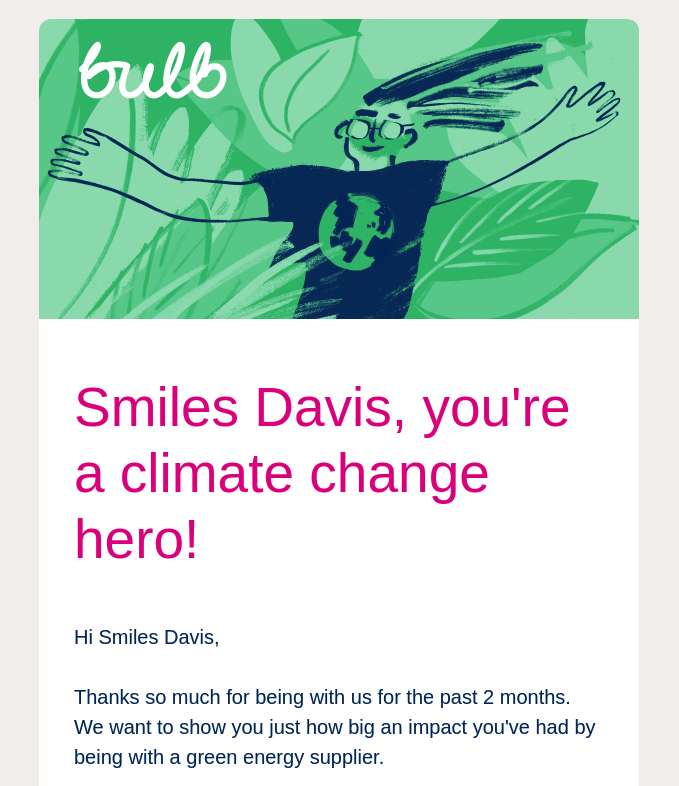
Birthday
Everyone likes to feel special on their birthday, and many businesses leverage this positive time to treat their customers to a little treat. There can be opportunities to segment your list based by age, so you can offer products better suited to the needs of that demographic. This could be a legally necessary field if you wish to market adult products to your list.

Gender
Including a gender field in your forms can help you understand the interests and behaviors of different genders and help steer the content of future campaigns. For example, if you work in the fashion industry, it means you can create dynamic campaigns to tailor the most relevant clothing for each gender. It’s important to include options that are inclusive of all identities including “non-binary” or “prefer not to say.”
Location
It may seem trivial, but collecting country or city data carries more insights than just name and geography. For example, someone in New York experiences very different weather than another person in Miami, and the two people would require different clothing. Time zones are another factor that you need to consider if you want to send an email at the perfect time to be opened.
Language
Most countries are now made up of a population with a multinational heritage. Therefore, only collecting location data may not be enough to determine the primary language of that location’s user. In the US, 21.7% speak a language other than English at home. Adding a language option in your signup form could not only boost engagement, but also serve essential information to the right people when they need it most.
Phone number
Customers increasingly expect to receive updates through omnichannel marketing, which means using multiple communication channels like SMS. These updates can include flight boarding passes, appointments, or follow-up surveys. However, compared to other personal information, people are more protective of their phone numbers, so it’s best to make it an optional field.
Preferences or interests
If you have a strong content marketing strategy with a high volume of output, it’s worth asking your audience about their interests. This means you can segment your lists and send users personalized content, which directly correlates to higher engagement. The New York Times does this by asking users if they like morning or evening briefings, cooking, books, technology, and more on their newsletter signup form.
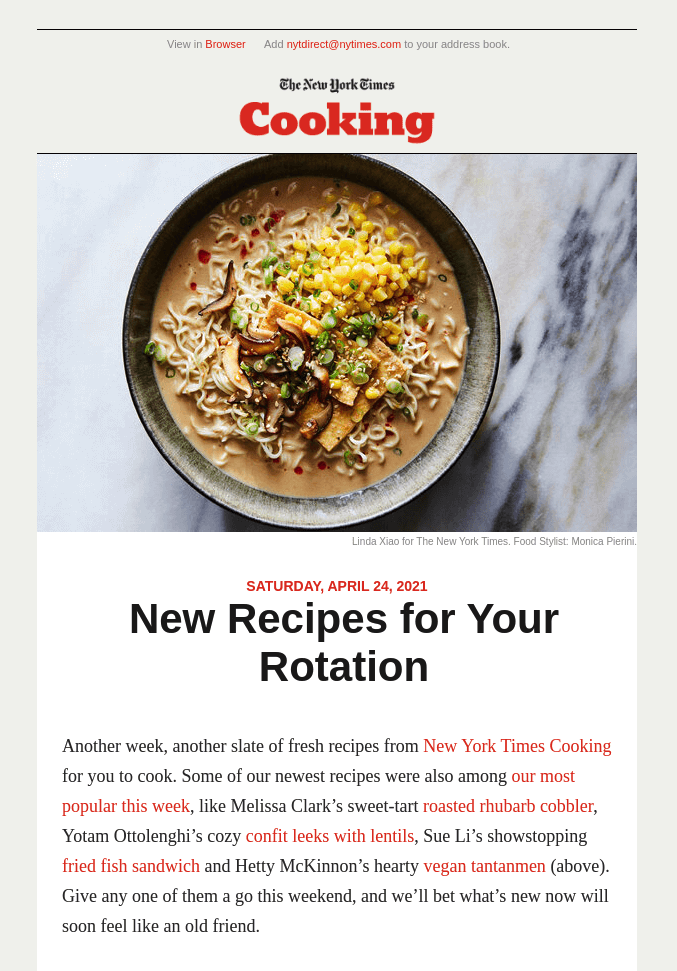
Company size
If you operate a B2B business, a company’s size is a valuable form field to consider. The size of a business determines the needs of that business, which means better tailoring of products, services, and communications. For example, an enterprise-size customer might want to see your case studies involving large clients, while a startup may want to see how competitively priced your product is.
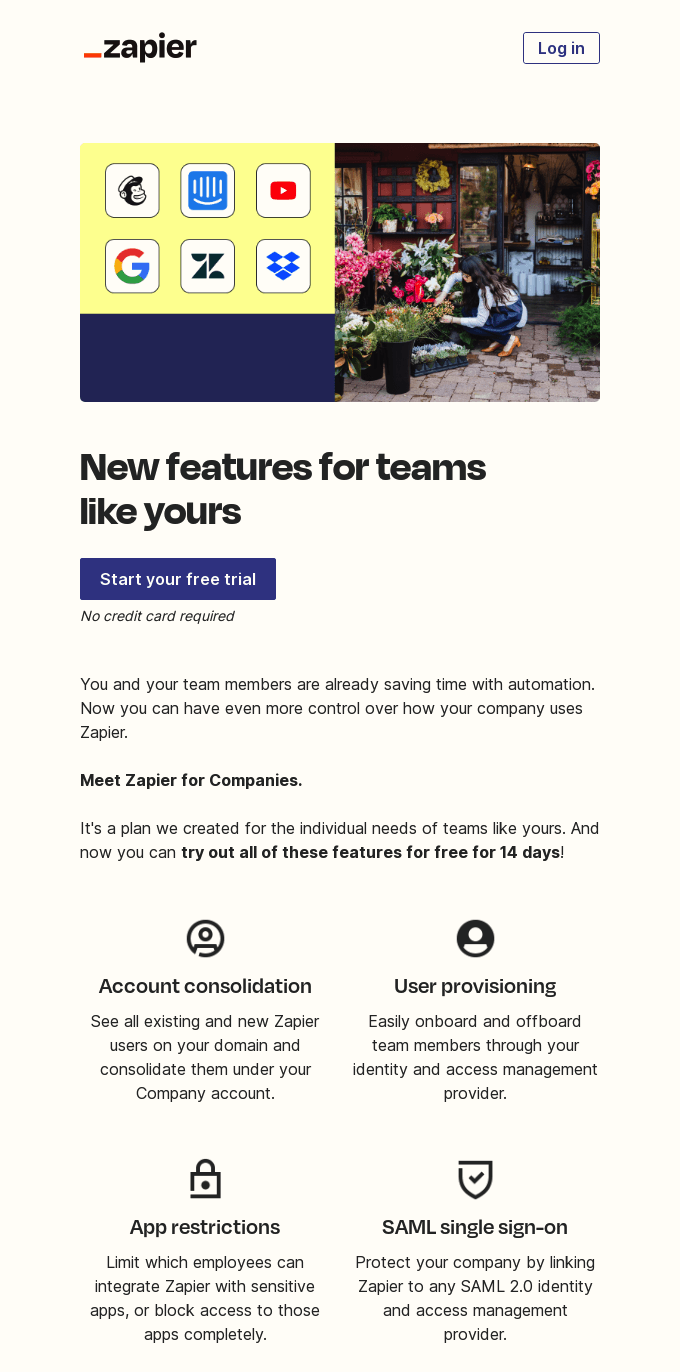
Business sector
Just as important as the size of a business is the industry it operates in. This is because every industry comes with its unique challenges and pain points that can be addressed. For example, healthcare organizations are often in need of digital transformation, whereas ecommerce businesses are always on the hunt for new ways to optimize their SEO.
So, what else should you include on your form?When asking this question, we recommend you proceed with caution. Less is definitely more on an email newsletter signup form.
While there are many additional fields a marketer may wish to include in their email signup form, they should be aware that email marketing best practice dictates that the more fields you demand, the fewer people will complete the form. When adding these additional fields, it’s essential to consider how they are displayed to ensure your form remains attractive and easy to use.
Create a signup form in 6 steps
Now that you understand why you need to create an email signup form and the fields you can include in that form, it's time to start building.
While you could code your form from scratch, we recommend using a drag-and-drop tool like Mailjet’s Form Builder to design and build your new email signup form.
Here’s how you can create a form in six simple steps:
1. Use a drag-and-drop tool like Mailjet's to create the form.
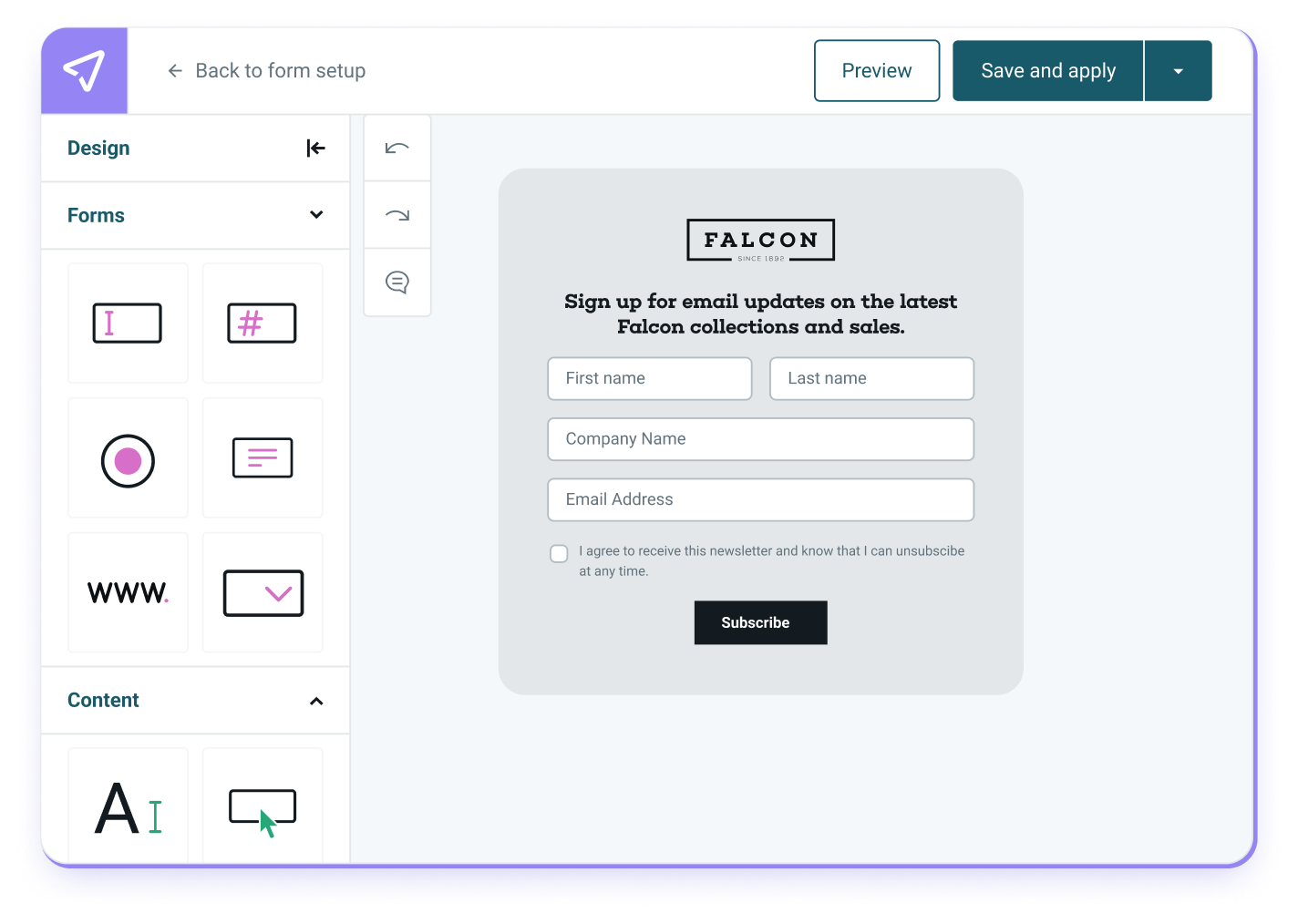
Use a form builder to create something that looks and feels like your brand.
2. Write your form’s copy.

Make sure you highlight the value provided by your email list and the type of communications you'll send.
3. Choose the right fields for your business.
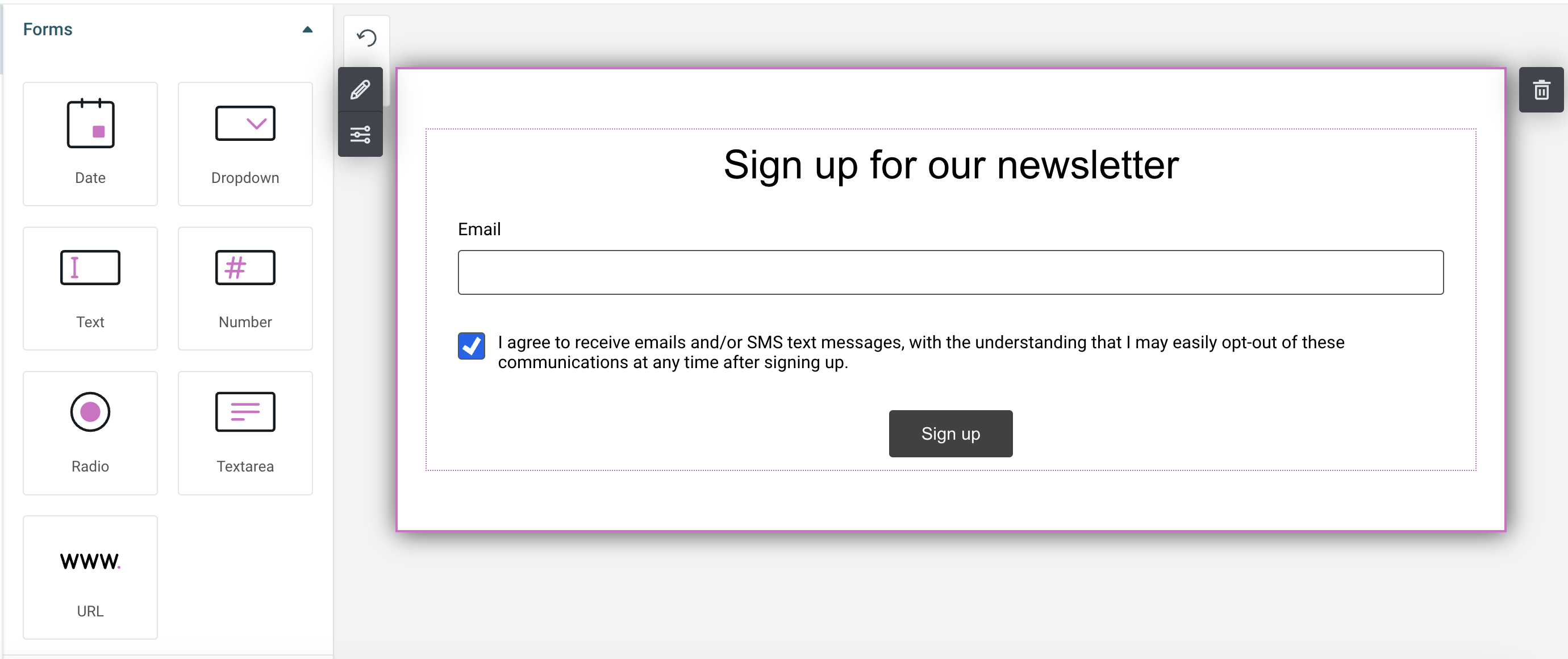
Think about what you'll need to personalize and segment your email communications.
4. Design the confirmation email and confirmation page.
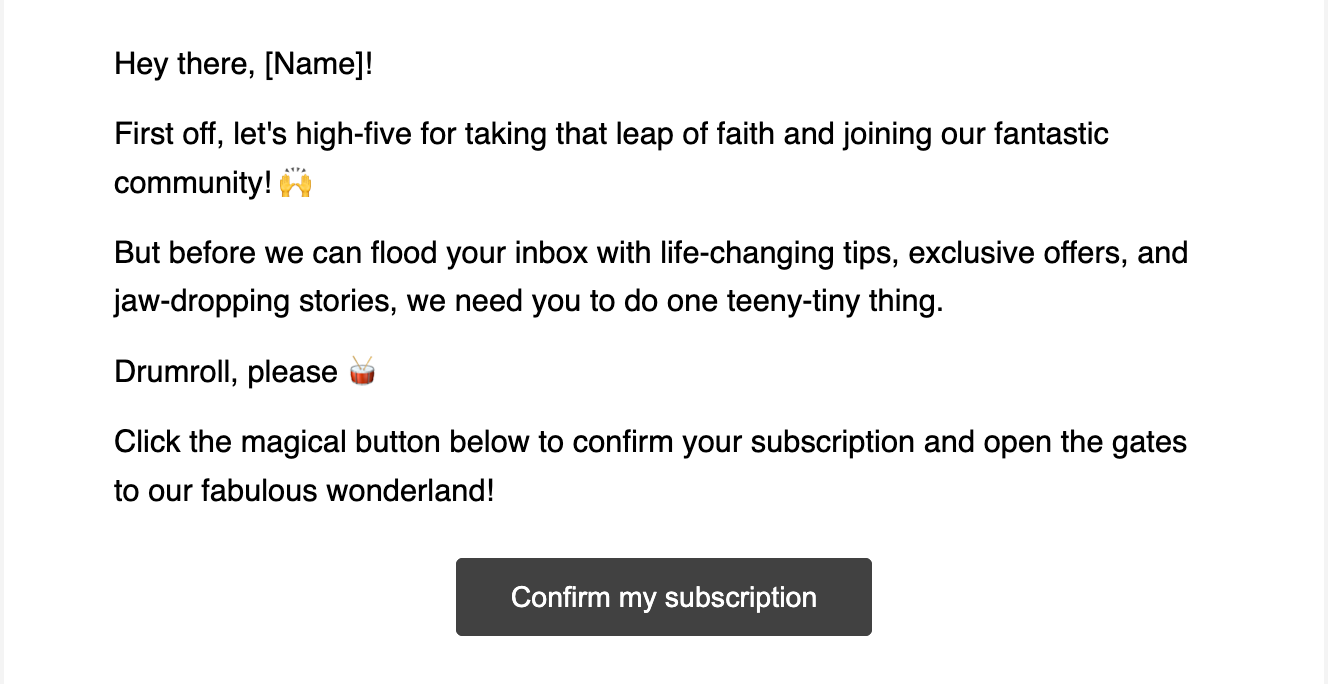
You can create something short and sweet or add a bit of pizazz.
5. Connect your form to a contact list.

You can segment your audience based on the position of each signup form.
6. Embed the form on your website.

Once you’ve created your form, simply copy and paste the HTML into your website’s CMS.
If you want to learn how to do this with Mailjet, step-by-step, check out our Form Builder documentation.
Drive more email signups with Mailjet’s Form Builder
Hopefully by now you have a better idea of how you want your signup form to look, and of the kind of data you want to collect.
Mailjet’s powerful drag-and-drop Form Builder is the perfect tool for crafting beautiful signup forms that convert. It requires no coding or design skills and can be embedded on your site, helping you collect and segment subscribers in a matter of minutes.
If you’re in need of more signup form inspiration, check out our other article: 10 newsletter signup form examples that drive conversions.
Form builder
Convert visitors with our subscription form builder
Create your subscription form using our drag-and-drop designer and grow your contact lists. Mailjet’s Form Builder offers a native double opt-in which guarantees your recipients' interest - an essential prerequisite for your reputation as a sender and GDPR.








